In The Algorithm Design Manual, the author provides an algorithm for two-coloring a graph. It's similar to the algorithm that counts the number of components, in that it iterates over all available vertices, and then colors and performs a BFS on that vertex only if it is not discovered:
for(i = 1; i <= (g->nvertices); i++) {
if(discovered[i] == FALSE) {
color[i] = WHITE;
bfs(g, i);
}
}
The BFS calls a process_edge function when y in the edge x -> y is not processed, or if the graph is directed. The BFS looks like this:
bfs(graph *g, int start) {
queue q; //queue of vertices to visit
int v; //current vertex
int y; //successor vertex
edgenode* p; //temporary pointer used to traverse adjacency list
init_queue(&q);
enqueue(&q, start);
discovered[start] = TRUE;
while(empty_queue(&q) == FALSE) {
v = dequeue(&q);
process_vertex_early(v); //function that handles early processing
processed[v] = TRUE;
p = g->edges[v];
while(p != NULL) {
y = p->y;
//If the node hasn't already been processed, or if the graph is directed
//process the edge. This part bothers me with undirected graphs
//because how would you process an edge that was wrongly colored
//in an earlier iteration when it will have processed[v] set to TRUE?
if((processed[y] == FALSE) || g->directed) {
process_edge(v, y); //coloring happens here
}
if(discovered[y] == FALSE) {
enqueue(&q, y);
discovered[y] = TRUE;
parent[y] = v;
}
p = p->next;
}
process_vertex_late(v); //function that handles late processing
}
}
The process_edge function looks like this:
process_edge(int x, int y) {
if(color[x] == color[y]) {
bipartite = FALSE;
printf("Warning: not bipartite due to (%d, %d)\n", x, y);
}
color[y] = complement(color[x]);
}
Now assume we have a graph like this:

We can two-color it like this:

But if we are traversing it by vertex order, then we will initially start with node 1, and color it to WHITE. Then we will find node 13 and color it to BLACK. In the next iteration of the loop, we are looking at node 5, which is undiscovered and so we will color it WHITE and initiate a BFS on it. While doing this, we will discover a conflict between nodes 5 and 1 because 1 should be BLACK, but it was previously set to WHITE. We will then discover another conflict between 1 and 13, because 13 should be WHITE, but it was set to BLACK.
When performing a normal traversal of a graph through all components (connected or not), order will not matter since we will end up visiting all the nodes anyway, however the order seems to matter in the case of coloring the graph. I didn't see a mention of this in the book and only ran across this issue when I was trying to two-color a randomly-generated graph like the one above. I was able to make a small change to the existing algorithm, which eliminated this problem:
for(i = 1; i <= (g->nvertices); i++) {
//Only initiate a BFS on undiscovered vertices and vertices that don't
//have parents.
if(discovered[i] == FALSE && parent[i] == NULL) {
color[i] = WHITE;
bfs(g, i);
}
}
Does this change make sense, or is it a hack due to my not understanding some fundamental concept?
UPDATE
Based on G. Bach's answer, assume we have the following graph:

I'm still confused as to how this would end up being two-colored properly. With the original algorithm, the first iteration will initiate a BFS with node 1 to give us a graph that is colored like this:

In the next iteration, we will initiate a BFS with node 5 to give us a graph that is colored like this:

The next iteration will initiate a BFS with node 6 to give us a graph that is colored like this:

But now we won't re-color 5 because we have already visited it and so this leaves us with a graph that hasn't been colored properly.